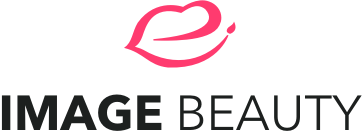The phrase, "beauty does well in hard times" is something experts often bring up during periods of economic downturns and recessions. When many high-end luxury brands are forced to cut back jobs, the beauty industry seems to be fairing pretty well for itself, considering.
The Lipstick Effect aka The "Leading Lipstick Indicator"
The Lipstick Effect is the economic theory that suggests that when the economy tanks or is uncertain, almost all retail purchases decrease, but lipsticks sales increase. The original phrase, "leading lipstick indicator" was coined in 2001 by Leonard Lauder (the chairman of Estee Lauder) after September 11th, when lipstick sales increased 11%. According to the Chicago Tribune, the phrase, "refers to a tendency of consumers during a recession to buy small, comforting items, such as lipstick, rather than large luxury items."
The History of Lipstick Sales
The Lipstick Effect was first apparent during the Great Depression, when lipstick sales rose 25%! Also noteworthy is that the employment rate for the cosmetics industry increased during both the 1990 and 2001 recessions. RAB Capital analyst, Dhaval Joshi explains, "the evidence shows that when budgets are squeezed people simply substitute large extravagances for small luxuries." An, "affordable splurge" leaves us with the same retail therapy that a big purchase would, but does not leave us with any buyer's remorse afterwards. When we are financially tight, we can't justify spending several hundred dollars on a pair of shoes. We can, however, justify the $20 lipstick purchase from the makeup counter.
Is the Lipstick Effect happening now?
Evidenced by major retail institutions such as Saks Fifth Avenue, who has lost about 99 million dollars, it is no surprise that things are not boding well for luxury goods sales. But according to the Chicago Tribune, color cosmetic sales are currently up 4.4%. In addition, Revlon recently reported that while its total sales are down, its sales of cosmetics are actually going up. Nancy Upton, a professor of marketing at Northeastern University told Forbes Woman, "We see people making economically irrational decisions to lift their mood...cosmetics offer immediate gratification..." Along with fast food restaurants, which also seem to be doing well despite the economy, lipstick acts as a relatively inexpensive retail pick-me-up.
Are you participating in the "Lipstick Effect"?
Don't feel bad! Once in a while, small personal purchases are not a bad thing. And, lipstick is so affordable! Total Beauty gives some suggestions for inexpensive lipstick alternatives in an article called "less vs. luxe lipstick". Some of their recommendations:
- For pink lips, instead of Lipstick Queen's sinner pink ($18), try CoverGirl Incrediful Lipcolor in Warm and Rose (Your Price, $6.59)
- For peach lips, instead of YSL Gloss Pur in Pure Coral ($29), try CoverGirl Amazement Lip Gloss in Freedom of Peach (Your Price, $5.21)
- For plum lips, instead of Giorgio Armani Sheer Lipstick in Plum ($25), try CoverGirl TruShine Lip Color in Plum Shine (Your Price, $6.10)
Lipstick Trends
- According to New York Magazine's The Cut, February's NY Fashion Week showed that Raspberry lips are now the newest lip trend. Try Almay Ideal Lip Color in Raspberry or Max Factor Colour Perfection Lipstick in Raspberry.
- Hillary, one of the editors at WhoWhatWearDaily tells us that blood orange lips are the hottest lip color for Spring. Try Revlon Moon Drops Lipstick in Hot Coral
- Lastly, we've been seeing a lot of celebrities trying out pale, "bubble gum pink" lips. Try I Beauty's LiquiColor Lip Gloss in Nude Pink
For a more classic look...
If you're not into the whole "trendy lips" thing, that's okay! We recommend:
- For pretty deep pink lips, try Maybelline Moisture Extreme Lipstick in Wine and Roses
- For nude lips, try Revlon Beyond Natural Lip Gloss in Nude
- For bright red lips, try Revlon Renewist Lip Color in Red Reinvented
Further Reading:
- "Hard Times, but Your Lips Look Great" - article by the NY Times back in May 2008 that discusses how the recession affects the cosmetics industry
- "Cosmetics in the Downturn" - The Economist discusses the Lipstick Effect and it's usefulness as an indicator of the current economy
- "Luxury Skin Care Products Defy the Economy" - The LA Times' fashion blog, All the Rage, discusses how and why the beauty industry may be recession-proof
